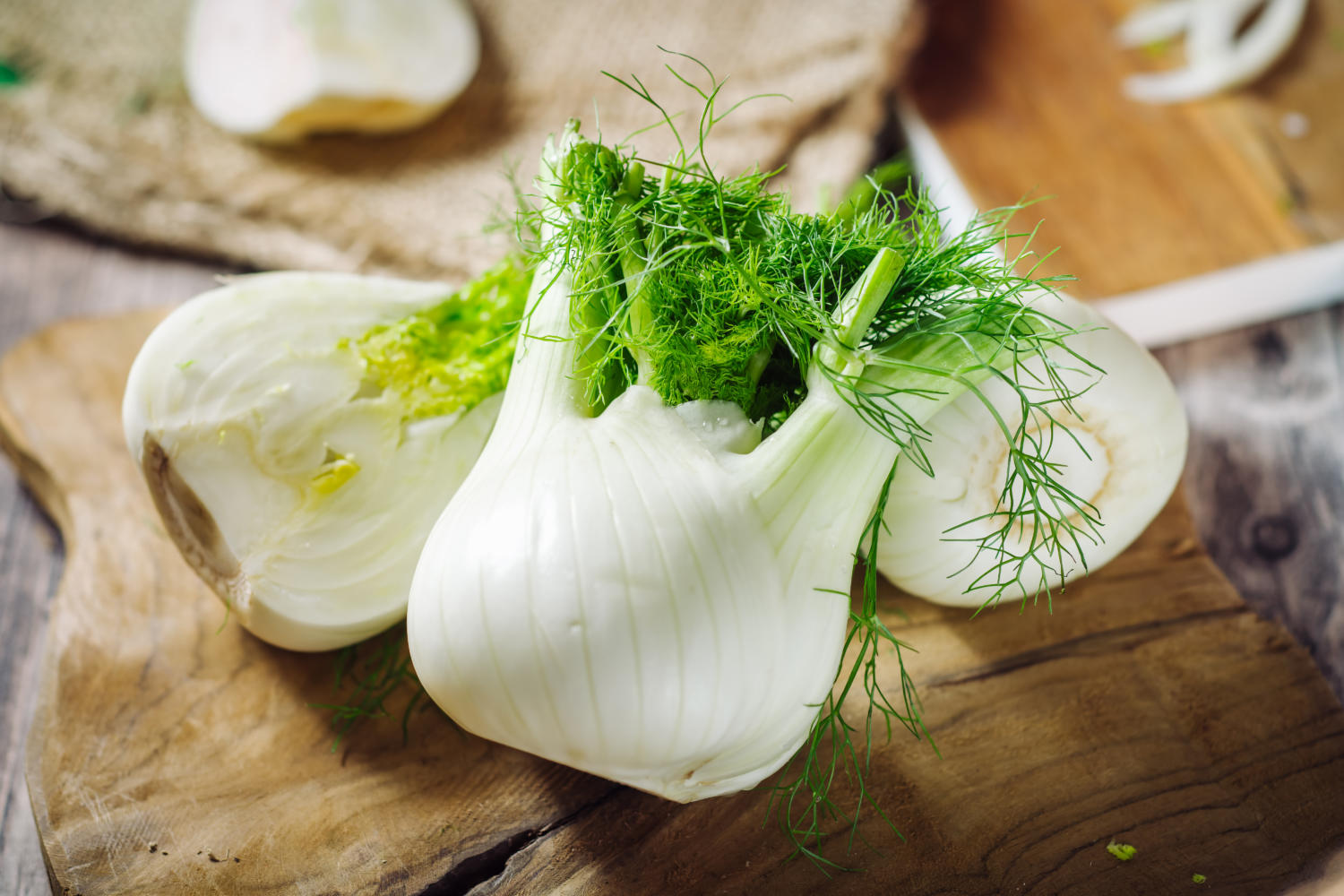
Many gardeners will have never tried growing Florence fennel. More in vogue than in the past, it’s often praised and promoted in cooking magazines and websites. On the plot, however, it remains a rarity usually regarded as too exotic or just ‘difficult’. While it’s true Florence fennel isn’t the easiest crop to grow, its cultivation isn’t as hard as sometimes supposed, especially if it’s got going at the right time of year, which is now: that is late June into July.
Before looking at growing Florence fennel let’s clear up any confusion there may be about the difference between it and ‘ordinary’ fennel. Both have ferny foliage, an aniseed flavour and share the Latin name Foeniculum vulgare. Foeniculxum is a member of the Apiaceae family, meaning fennel is related to other members of this large group, which includes carrots, but also herbs such as dill. It’s as a herb, and sometimes as an ornamental plant, that fennel is perhaps best known. The herb type of fennel can make a tall plant, towering up to two metres in height. It is grown for its leaves and stalks. Florence fennel, which has the suffix azoricum added to its Latin name is, or should be a much less lanky. It’s cultivated not for leaves but a ‘bulb’ which forms just above ground level beneath a leafy tuffet. The ‘bulb’ is the swollen base of the plant’s stem and it is getting this to form that is the key to successfully growing this crop.
If not grown carefully Florence fennel will fail to produce a bulb. Instead, it will bolt, that is run to seed, so that the plant has elongated growth that lacks bulk at the base. Anything salvageable from spindly, seeded, plants is likely to be stringy in texture. There are usually two reasons for this propensity to bolting. The first is lack of moisture. Florence fennel requires copious watering; drying out and the resultant check to growth must be avoided. The second, and more often overlooked reason, is starting Florence fennel too soon in the season. Cold conditions are guaranteed to induce bolting. For this reason, it is best, despite some books and websites that suggest starting Florence fennel in April, to wait until mid-summer to sow and plant.
This leads us to the question of whether Florence fennel is best sown direct in the soil or planted out from seedlings grown under cover. Over the years I’ve experimented with both methods. When sowing into soil I don’t put the seeds in before late June. If conditions are dry I make sure to water the drill (sowing groove) as rapid germination is essential if the bulbs are to have enough time to swell to a good size. A late June or early July sowing usually gives a harvestable crop by mid to late September. With the second method, planting out, I sow seeds into small pots under cover from early June. The young seedlings are carefully transplanted outside three or so weeks later. Planting out has the advantage of giving an earlier crop but does, in my experience, increase the chance of plants bolting. It’s probably transplanting, however delicately carried out, that prompts this: it can’t be emphasised too much that any ‘check’, whether root disturbance, drought, or cold is likely to result in a poor or useless crop.
Florence fennel’s may be a tad tricky but don’t let this put you off giving it a try. There is a lot to be said about this plant. As well as its culinary virtues and the sense of achievement gained from the successful growth of one of the more challenging vegetables, this is a crop that can be started relatively late in the season, slotted in after anything harvested by mid-summer. Even if some crops run to seed, there’s a statuesque quality to the plants which can make a metre or more. And even when bolted it’s still possible to use the leaves and stems as flavouring, as with fennel grown as an herb.











Add a comment